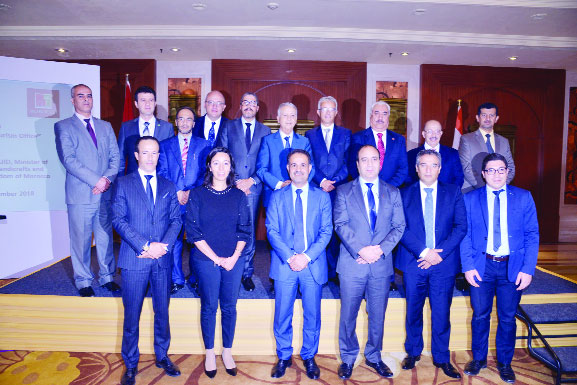
Morocco to Promote Tourism With India
by Team Viva / 27 September 2018The Kingdom of Morocco expressed its interest in increasing the number of Indian tourists by next year. It will soon be launching its first tourism office in the capital.
The Minister of Tourism, Air Transport, Handicraft and Social Economy of the Kingdom of Morocco, Mohammed Sajid, informed that the country currently has a footfall of 15,000 Indian tourists and is aiming to touch the 40,000 mark by 2019. The number of tourist arrivals is a small percentage of the total tourism arrivals in the country but given the potential of the outbound tourism market of India, the country is strengthening its presence in the India.
The Moroccan National Tourist Office (MNTO) in New Delhi would be the first in South Asia and the second in Asia, with Beijing being their first office in the continent. The kingdom operates 17 tourist offices globally.
Sajid said, “India is a very big country. However, there were low numbers of foreign tourists from India to Morocco in recent years. We have a lot of similarities with India in terms of culture and development. Both countries have a very diverse tourist sector that is rooted in their civilisations. We can also learn a lot from each other’s tourism sector as it is a very strategic sector that can create jobs.” The minister stressed that Morocco is keen to enhance its cooperation with India in the tourism sector, in harmony with its new orientation towards emerging as a preferred destination outside the traditional Asian tourist market. He added, “We are also going to sign an agreement on air transport with Air India.”
The tourism minister believes that the Delhi office would help the destination in understanding the demands and requirements of the Indian tourists. It will also serve as a forum for planning various strategic promotional and awareness programs to tap the robust tourism sector in India and the dissemination of important information to the various stakeholders of the tourism sector.
The Moroccan-Indian relations are getting stronger, as Morocco prepares to implement several measures to welcome more Indian tourists in 2019. Tourism remains a vital pillar of the Moroccan economy and the country’s second biggest employer after agriculture, while India is the fastest growing outbound market after China with UNWTO predicting 50 million travelers by 2020. With rising personal income levels, changing lifestyles, a huge middle class which has an aspiration to travel, the availability of low-cost airfares and diverse travel packages, India is rapidly becoming one of the fastest growing outbound travel markets in the world. Indian tourists are among the world’s highest-spending globetrotters. Their spending power has been estimated to be four times that of the Chinese and Japanese which justifies the need for a planned strategic campaign for Morocco in India.
Writer: Team Viva
Courtesy: The Pioneer
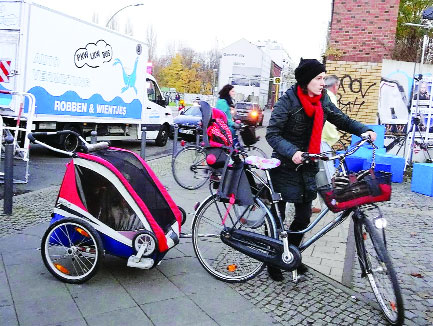
Exploring Germany the Local Way
by Prarthana Mishra / 18 September 2018Prarthana Mishra, an avid traveller, remembers how multi-modal commutes made her life easy in exploring the German city better.
While travelling from New Delhi to Berlin via Frankfurt, I flipped through the popular tourist destinations in Berlin to be put in sequence for my itinerary during the four-day stay. More or less, these were usual places which are distinct to Europe-museums, sprawling manicured gardens, historical sites, palaces, and castles. I recalled some common German phrases during the flight to prepare myself for some bargaining at local markets and communication with the locals. However, it was not much use as English is commonly used in the country to interact with tourists, at least at all major cities. However, Danke (Thank you) was a much used and helpful word.
Out of the Tegel Airport in Berlin, the first impression of a clean city was already imprinted in mind given my earlier visits to Europe. Well laid expressways with clear road signs and very few cars gave me the usual sigh of relief unlike what we encounter in our cities in India. The robust public transport system, which I used in next four days, is a preferred mode in Berlin as it is affordable, punctual and most importantly, it is definitely friendly. Another thing that caught my attention on the roads was the frequent use different types of bikes. Everyone rides their bike in Berlin and the variety of bikes used can actually amuse you. The city has dedicated bikeways offering safe and convenient travel routes for its two-wheeled commuters.
Among the many tourist attractions, the Berlin Wall still remains popular among tourists. It’s a memorial to the countless men, women and children who died while trying to get across the wall. When the Berlin Wall fell on November 9, 1989, it was celebrated around the world. Today, it stands as a stunning piece of public art, brightly painted by international artists. I dedicated the next day to the famous river cruise of Berlin. If you want to see lots of things but only have a short amount of time, then this river cruise on the Spree is the ideal way to take in everything at the heart of this bustling city.
I opted for a one hour excursion which covered some of the Berlin’s landmark monuments like the Reichstag (German Parliament Building), the Government Quarter and the House of World Cultures. The Central Station, Berlin Cathedral, Museum Island, and the oldest residential area in Berlin are also covered during the cruise. You get an audio guide on the cruise to learn about the city in 8 different languages. The Spree Island is better known as Museum Island, a UNESCO World Heritage Site. Here, you’ll find many of the city’s oldest and most important museums, including the Old Museum which houses the Crown Jewels and other royal treasures. Potsdam was the next destination worth visiting. This bordering city, around 25 km from Berlin was a residence of the Prussian kings and the German Kaiser until 1918. Around the city there are a series of interconnected lakes and cultural landmarks, in particular the parks and palaces of Sanssouci, the largest World Heritage Site in Germany.
The Berlin trip is not complete without a visit to the fascinating city, Munich. The most noteworthy attraction of this city is The English Garden. One of the largest urban parks in the world, the English Garden is Munich’s most popular green space, boasting over 48 miles (78 kilometers) of walking and cycling trails. People can relax, sunbathe, swim and even surf in the man-made river-The Eisbach. The memories of the trip may fade over time but a few impressions are everlasting. I may forget everything about the trip, but will remember Berlin for its bike rides, its kindness to differently-abled persons and of course, the enchanting river cruise.
Writer: Prarthana Mishra
Courtesy: The Pioneer
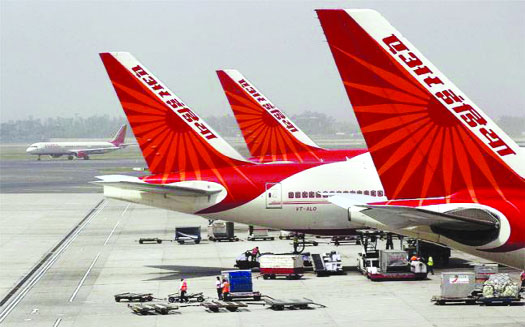
Government Revitalising PSUs and Ensuring Ease of Doing Business for Private Companies
by RK Pachauri / 07 September 2018The development of industrial sector in India after Independence was completely depended on the growth of the public sector units.
Prior to Independence, sectors such as railways, post and telegraph services and ordnance factories were entirely under the Government control and constituted the bulk of the public sector business. Yet, the manner in which these functioned then was quite different from what has evolved in recent decades. The Indian Railways, for instance, was a highly professional organisation with decision-making in the hands of competent and well-trained executives, which is still very much the case today. But in terms of future directions and major financial powers, the role of the executive has been curtailed over time. Significantly, on matters other than those involving broad policy, earlier there was no interference from above in respect of operational and management issues.
However, particularly since the 1970s, there has been a growing interference in the functioning of the Indian Railways, the state electricity boards as well as other public sector organisations, which were seen essentially as milch cows for the benefit of the politicians and the establishment in general. The result is that these organisations have become overstaffed with a decline in the calibre of employees and a reduction in the quality of human resources. The public sector has become a convenient place for providing employment to large number of people who are followers or constituents of those in power. This is one of the chronic problems ailing Air India as well, due to which the airline has been unable to attract any offers in response to the recent effort at privatisation.
The case of Air India is particularly pathetic. This was one of the finest airlines in the world and had a remarkable head start over several others which are thriving today, such as Emirates, Lufthansa and even Singapore Airlines. Among many factors on account of which this move failed is that the retention of 24 percent of stake in the hands of the Government of India scared away potential investors who were concerned at the possibility of interference by the Government.
But the main drawback to an enthusiastic response was the pathetic state of the financial state of Air India. Any potential investor would have been saddled with a huge debt burden, a large number of permanent staff who are perhaps of questionable value to the organisation and a decline in Air India’s share in the domestic market, partly as an outcome of the ill-conceived merger of Air India and Indian Airlines. Any passenger for whom Air India was the airline of choice in the 1980s, as in the case of this writer, would feel sad at flying the national carrier now. The class of service on board is nowhere near what it used to be.
The state of the aircraft and its interior are shabby, and even the cuisine served in every class, including business class, has declined. On a recent flight from New York to Delhi, happily, the punctuality at takeoff was perfect. But curiously what used to be a cabin only for business class now incorporates a row of first class, which was empty. No doubt this innovation must have been carried out to ensure that politicians and senior bureaucrats do not have to travel in the ignominy of humble business class. It was not long ago that politicians, both in and out of power, as well as bureaucrats of the rank of Joint Secretary and above, were routinely upgraded to first class along with their families.
Unfortunately, India has not allowed the public sector to reach the levels of excellence which would serve the country and the public well. The result has been a record of recurrent losses, an absence of innovation and vision which are the defining qualities of a successful business enterprise. Typically, it is much too often that the Government, official designated to serve on the board of a public sector enterprise, has the last word in decision-making, far above that of the chairman of the board. The entire body language and dynamics in the boardroom reflect that reality.
If we were to study the functioning of public enterprise in other countries, where success is evident, the relationship between the Government and the enterprise is distinctly different from what is evident in India. It is for this reason that organisations like, Électricité de France (EDF) and the Société Nationale des Chemins de fer Français (SNCF), the French National Railways, are shining examples of outstanding professionalism, world-class innovation and overall performance, which have been the pride of France and an emblem of economic success over a long time.
Significantly, in India too, there have been periods of notable success of specific public sector organisations but this was essentially the result of competent and influential leaders, such as V Krishnamurthy of BHEL and Maruti, Mantosh Sondhi of the Bokaro Steel Plant, Dr Verghese Kurien of Amul and Dr NB Prasad of ONGC. These were industrial managers and captains of enterprises who would not allow any undue interference in the organisations they headed.
Even more impressive than the two above-mentioned public sector organisations in France is the case of a developing country initiative in Brazil, which goes by the name of Empresa Brasileira de Aeronáutica (Embraer), which is now a world-class producer of aircraft and aeronautical equipment. Embraer was created in 1969, and by contrast, Hindustan Aeronautics Limited was established through the visionary initiative of Walchand Hirachand in 1940 in association with the Government of Mysore and one-third participation of the Government of India. In 1963 the latter was established as a totally Government-owned company, and the rest, as they say, is history.
It is often said that business should not be the business of the Government. But given the large investments that we have in the public sector in India, a new dynamic is essential for defining the nexus between the Government and the public sector, by which accountability to Parliament and the people is not diluted. And it should be carried out in a manner that ensures innovation and success in the market are not compromised for any public sector enterprise. Is this an issue that perhaps Parliament needs to debate on the basis of enlightened analysis and global experiences? Even for privatisation of the public sector, its dynamism and success in the market are essential.
(The writer is former chairman, Intergovernmental Panel on Climate Change, 2002-15)
Writer: RK Pachauri
Courtesy: The Pioneer
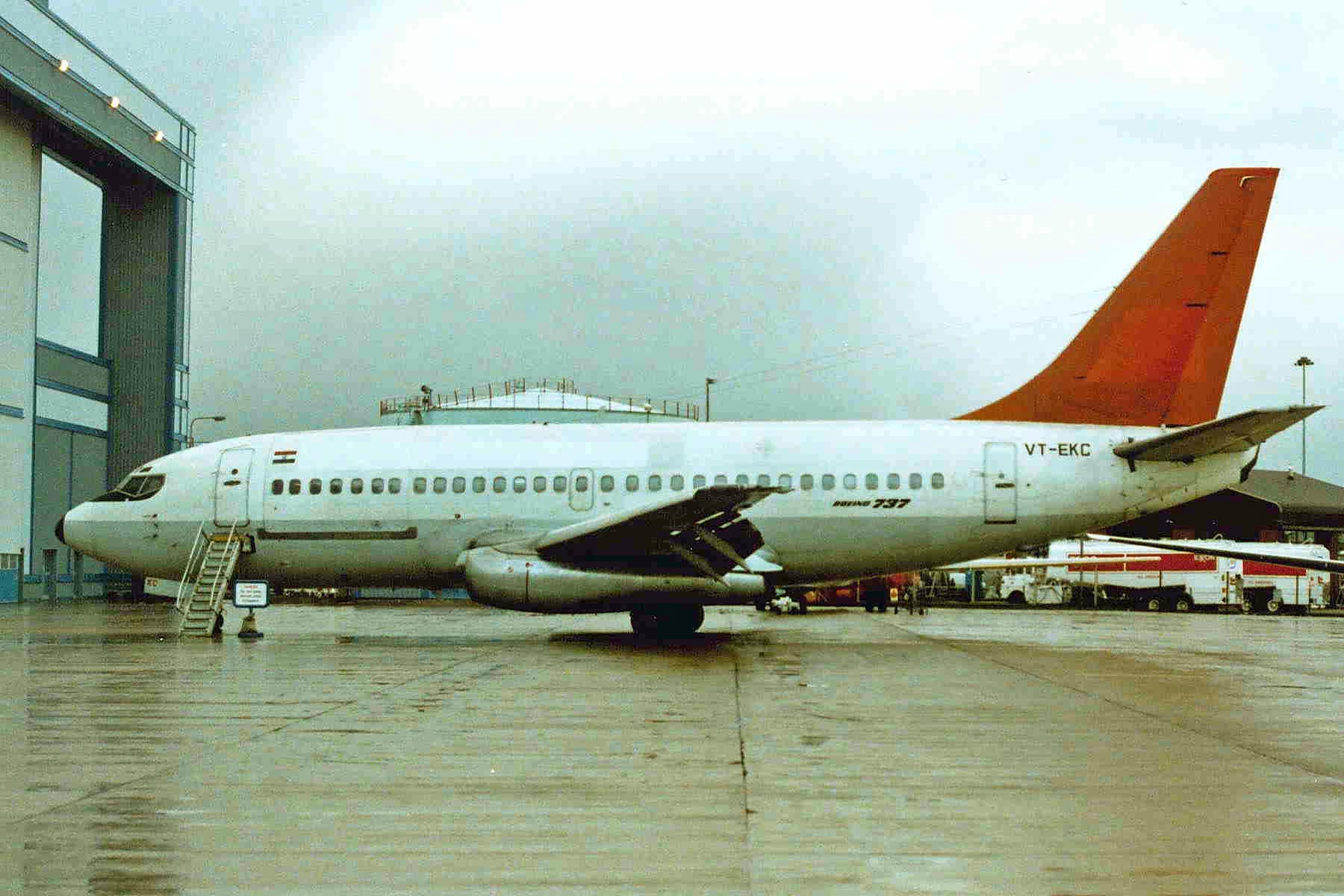
What brings Indian Airlines at Forefront of Troubles?
by Kushan Mitra / 05 September 2018Boarding a flight nowadays is very difficult as security lines at airports are getting longer — much longer especially with first-time flyers travelling in numbers — and wait times are crossing the levels.
And the average Airbus A320 operating for the low-cost carriers genuinely feels like an ‘AirBus’. Yet, a cursory look at airline industry results right now have sent shivers through the spines of investors, with Jet Airways and SpiceJet declaring losses and IndiGo’s profits collapsing 97 per cent to just 28 crore, the Indian aviation sector is bleeding. Which logically makes no sense whatsoever to the average flyer today, but India’s airlines are expected to post losses of around Rs 15,000 crore this year according to a report by the Centre for Asia-Pacific Aviation (CAPA).
One crucial reason for the losses is of course the rising price of Aviation Turbine Fuel (ATF), and even if a SpiceJet Bombardier Q400 recently flew from Dehradun to Delhi on jathropa-derived biofuel, don’t expect ‘green’ fuel to make a huge dent in fuel costs for another decade or two. And with crude prices shooting up coupled with the fact that the US Dollar has strengthened against the rupee, airlines are having to pay a lot more for aircraft leases and servicing, since the entire industry runs on the greenback.
Usually when costs go up, prices usually follow, but the airlines are finding themselves forced to offer more and more seats on discount sales, with IndiGo starting yet another ‘million seats’ for Rs 999 sale recently. Airlines measure their performance on two key metrics, Costs per Average Seat Kilometer (CASK) and Revenue per Average Seat Kilometer (RASK); and while costs have gone up thanks to fuel prices, the falling rupee and rising wages, revenues have not kept pace at all. Indeed, leading airlines have actually seen yields from passengers drop according to their results. This clearly means that Indians want to fly, but they don’t want to pay more to fly.
This brings in the concept of price elasticity, with more Indians flying and with more flying options, they can look at multiple destinations at the same time on multiple airlines and if the fares do not suit them they can easily cancel their travel plans. The Government and the regulator, the Directorate General of Civil Aviation (DGCA) have also made it difficult for the airlines to make ancillary revenues with passengers calling for caps on cancellation charges and calls for caps on excess baggage and other charges. Airlines will soon be permitted to offer onboard WiFi, but with costs of installing such systems up to a million dollars per aircraft, can they afford to do so, given that some airlines are believed to have less than a month of cash in hand.
One major reason for lower yields, other than during peak festive season is one of overcapacity despite planes being full leaving the airlines no choice but to offer bargain basement fares to get ‘bums on seats’, the costs of flying an empty seat being more than carrying someone who has paid for a super-cheap fare. India’s busiest sector, and one of the busiest in the world, Delhi-Mumbai has over 60 daily, non-stop services. Another sector, to Goa’s Dabolim airport from Delhi, a sector that had around five non-stop flights a day five years ago, today has over 15 non-stop flights. Some suspect that airlines are offering so many flights just to lock up valuable slots in airports like Delhi and Mumbai, where despite expensive renovation and construction over the past decade, almost no slots are available. Delhi’s Indira Gandhi International Airport, whose redesign was supposed to be sufficient till 2030, has already hit peak capacity of 60 million passengers and even with three runways has massive congestion problems, with aircraft holding in the air for upwards of an hour. A Delhi-Mumbai flight which used to take just one hour and forty-five minutes from gate to gate a decade ago, can now take two hours fifteen minutes when counting the amount of time planes have to wait on the ground and in the air.
A combination of too many flights, too many airlines and the subsidised Air India adding to the overall woes of the private airlines, things are not looking good for the airlines. The fact is that Air India’s privatisation might now be impossible given the overall state of the aviation sector in India, things will take a negative turn before they improve. Airlines had a disastrous first quarter, but the second quarter could well be worse and airline stocks which gave huge returns in 2017, will almost certainly be the worst sectoral performers in the stock indices in 2018. Jet Airways stock has collapsed from Rs 870 in early January to Rs 282 on August 31, Spicejet from Rs 148 in early February to Rs 79 and sectoral darling Interglobe from Rs 1498 in April to Rs 944 today.
What is the solution? The obvious one is that the Government cuts taxes on fuel, but a crippling fiscal deficit and the need to promote social spending ahead of an election year will make the government tone-deaf to this, although the need to cut fuel taxes is also one of political expediency for the Narendra Modi Government. The second factor could be one of consolidation, the Tata Group find themselves supporting two airlines right now, Air Asia which has a muddled direction and Vistara which is apparently far from profitable. Jet Airways increasingly looks like it might have a change of management and of strategic direction, especially given that its saviour in its last time of crisis, the Abu Dhabi based Etihad Airlines is itself bleeding and some of the other airline groups could pitch in for Jet, especially Air France – KLM Group are also deep in trouble.
The low-cost carriers have to figure out ways to increase ancillary revenues, for European low-cost giants RyanAir and EasyJet these additional revenues are what drive profitability. But for the likes of GoAir, the possibility of foreign flights could bring in more revenues. Also, the possibility of a couple of industry consolidation exists, if two players came together they could immediately rationalise their route structure, cutting Delhi-Mumbai services for example, adding more international routes and routes on underserved legs. But India’s aviation infrastructure will have to keep up, it isn’t just Delhi and Mumbai that are barely keeping up, Bengaluru, Hyderabad, Goa and Chennai airports are all bursting at the seams, and while at Bengaluru work on the new runway is on and Goa will soon have a new airport despite protest, India needs many more runways.
The fact is that India has little or no choice but to grow the aviation sector. We once said the Indian railways connected the country and they still do when it comes to freight, but for a growing number of travellers air travel is the only option, because time is money and India’s economic progress in the coming decades depends on aviation. Hopefully the Government realises this and does the right things to ensure sectoral growth continues apace so that India’s airlines can thrive going forward.
Writer: Kushan Mitra
Courtesy: The Pioneer
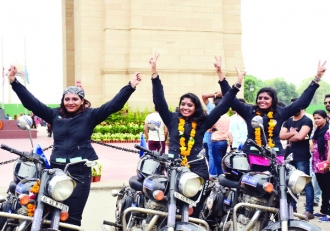
The Journey of Six Women Travelling From Southern to Northern India
by Opinion Express / 27 August 2018Travelling from southern to northern India, a group of women from Kochi learnt about their limits. They tackled a number of harsh weather conditions, potholes, and traffic to draw a conclusion.
Like Valkyries they rose. Six women started their 20-day journey from Kochi to Delhi on their Enfield motorcycles to spread the word about women empowerment and equality. And then the deluge happened and Kerala was flooded the worst in history. But the women did not return as riding back would have cost more time with little possibility of affecting a practical consequence or impact. So they continued on their mission which could still make a difference.
Along the path, which ran across eight states, they visited multiple NGOs where young girls and women lived or visited. They were welcomed to bhangra music, were adorned with turbans, a stark contrast to the rest of the outfit, and swords. They were covered in all black riding gear. Gloves, jackets, shoes, the attire made them look sturdy and ready for a challenge, which the trip had been.
Right after leaving Kochi, they met young boys in Salem, who, after reading about the six women riders in the newspapers, waited to speak to them so that they could convince their parents to let them go on a trip to the North East. Somewhere in Gujarat, they met a young mother and daughter who took pictures with them. The mother told the child to be more like these riders of destiny. “Mostly, people know about us and while we travelled through the highways, they waved to us,” they said.
All of them are employees of the Federal Bank, which supported them in this undertaking. The youngest among them was 22 and the oldest 41 and a mother of two. She left her children in the care of her mother and sister during the 20 days. When asked if they believe that women need to pull each other up, the oldest of the group chimed in that the support she got from her group is an example of that. Seetha said that because of her health, she often lagged behind the others but they would emotionally push her forward and encourage her.
They would also stand by the road if they had gone ahead without her. Before she came on the journey, she had a million doubts but was assured by the women in her family that her children would be well taken of. These factors motivated her to complete the trip.
Most of the women had not stepped out of Kerala on their bikes before. Equipped with some hands-on training with minor repair of the Enfield Bullet motorcycle and practice of 10 days, they took this up. One of the girls, Sangeetha, shared how people would question her about her ability to manoeuvre the bike despite her short height. She said that it did not matter because you are supposed to move forward with the vehicle not stay stationary.
Merilyn Hamlet, 27, a former finalist of Miss Kerala, shared about the worst riding experience during the trip. While they faced rain, potholes and traffic everywhere, the travel from Pune to Mumbai was “terrible” even though it was the shortest one. They were trapped on a highway in pounding rain for several hours.
“The people we met on the way were very inspiring,” said the riders unanimously. They were approached by two older women even during our conversation with them. The older woman blessed the riders and said that they inspired them. Their takeaway from the experience was that women could do anything, regardless of age, health and family. They also want to carry on the journey, the second part of which would be from Delhi to Ladakh, at a later date.
Writer and Courtesy: The Pioneer
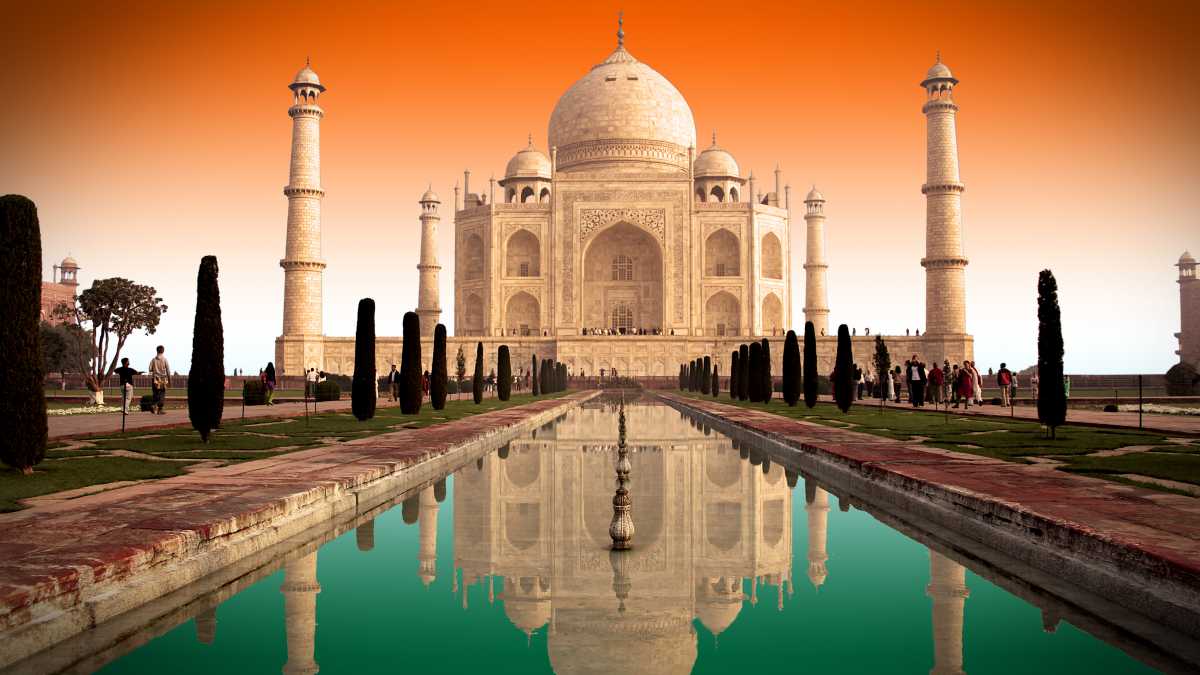
Restoring the Taj Mahal: Any Solution?
by Opinion Express / 26 July 2018Taj Mahal, one of the seven wonders of the world, has deteriorated when it comes to the monument shine and sparkle. The government should have taken the necessary action in time to avoid such a situation. But, it is never too late.
It is unfortunate that the proactive approach of the Supreme Court towards efforts to restore the Taj mahal to its pristine glory had not been mirrored by successive Uttar Pradesh and Union Governments, not to mention the Archaeological Survey of India which is primarily responsible for the upkeep of the medieval-era monument. As a result of the lackadaisical attitude of the authorities, the destruction of our national heritage has been an ongoing process — the once ivory-white monument has changed colour to a yellowish brown and portions of it are now covered in algae. This, despite the efforts of the top Court which has lost no opportunity to try and get the concerned authorities to do their job. It’s been almost three decades now that the apex court has been periodically rapping the authorities on the knuckles and asking them to initiate a slew of measures to protect the Taj to no avail. It was only when its patience ran out and the Supreme Court in deep anguish admonished the administration on 11 July telling it to either “shut” the Taj or “demolish” it that the Uttar Pradesh Government seems to have taken serious cognizance of the neglect of the Taj Mahal. It has now come up with a roadmap aimed at a long-term solution to preserve and protect the monument.
In essence, the document provides no radical new solutions. But even if the proposed measures are implemented in all seriousness, there will be several positive ramifications. The blueprint vows to come down heavily on polluting industrial units nearby, proposes to make the Taj complex and its surroundings plastic-free, and promises to put in place a traffic management plan for the Taj Heritage Precinct besides banning construction activities on the Yamuna flood plains. Indeed, the problem with the Taj is not just about its discolouration. It is more to do with the health of the Yamuna on whose banks the monument was built. The river is now practically ‘dead’ due to rampant illegal construction on its banks and the pollutants discharged into it from industries in its vicinity. An iron hand will be needed to implement the roadmap. The Uttar Pradesh Government’s proposal to allow the public-private model to explore opportunities in conservation, restoration and upkeep of the Taj Mahal, a template which has been a great success in European countries, is also welcome.
Writer and Courtesy: The Pioneer
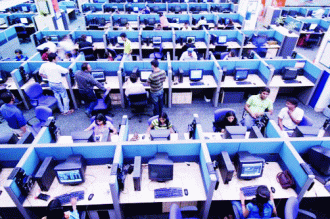
Priorities for IT Manpower in India
by Pravin K Singh/ Balwant S Mehta / 18 July 2018After decades of exceptional performance and winning a name as the most preferred IT outsourcing destination, the IT growth story in India is at a tipping point. It is time to set our priorities right by tapping into the potential of our youth.
The information technology (IT) sector has successfully positioned itself on the global map of the world for its high quality, low-cost technically sound manpower, and its propitious accomplishment of offshore models. While in the off-shore model, a large number of companies administered temporary work visas to their technical manpower working at client sites in the US, the UK and other countries, the Indian IT sector has emerged as one of the key industries that has been driving growth.
India soared as the world’s most preferred outsourcing destination for IT services, globally. It accounted for more than half (56 per cent) of the total global outsourcing business. Total revenue in 2017-18 from this sector was $167 billion, contributing more than nine per cent to the Gross Domestic Product (GDP). The sector also ranked third in India’s total Foreign Direct Investment (FDI) share worth $29.83 billion between April 2000 and December 2017. Most importantly, the IT sector has generated direct jobs for 40 lakh youths in the country. These are the reasons why India’s services sector ranked among the world’s top five economies. This sector was also tagged as the sunrise industry of the country.
The IT sector is also the one that continues to be among the largest private sector employer in the country, creating both direct and indirect employment. In particular, this sector has created direct employment for educated and skilled youths in urban areas, and indirect jobs in several associated sectors such as transportation, real estate, catering, security, housekeeping, among others.
In 2017-18, this sector provided direct employment to 39.7 lakh people — up from just about 5.3 lakh in 2001-02, 13.1 lakh in 2005-06 and 25.4 lakh in 2010-11. The annual growth rate of jobs declined from double-digit during 2000-2010 to single digit after it. In particular, from 2015-16, the annual growth of jobs reduced from 6.2 per cent in 2015-16 to sheer 2.6 per cent in 2017-18. It was estimated that one direct job in the IT sector creates four additional jobs in rest of the economy.
Furthermore, this sector offers easier access to jobs for women than any other sector. Women occupied more than 34 per cent of the jobs in the IT sector in 2016-17 — this is much higher than any other sector in the Indian economy.
A dipping graph: Of all the figures above, the IT sector that was crooning the hymns of the country’s past grandeur, is now in complete shambles. The altering landscape in the past few years; more so in the last two-three years. has found its reflection in poor performance, slumping revenues, a fall in hiring of employees, existing employees have been laid-off by both small as well as large IT companies. These are illustrations enough to gauge the dipping graph of the sector.
Delving into the annual reports of the last three fiscal years of some of the top IT firms in India, such as Wipro, Infosys, Cognizant, Tech Mahindra, Tata Consultancy Services (TCS) and Capgemini, it was found that these companies have been laying-off their employees in hundreds and thousands due to recent upheavals and emerging challenges. They were of the opinion that the layoff is an annual process to weed out bottom performers and this year was no different.
The fairer sex, which constituted almost one-third of the new recruits in the IT sector, too were refrained from being inducted as the Maternity Benefit (Amendment) Act, 2017 increased the duration of paid maternity leave available for women employees from the existing 12 weeks to 26 weeks. “This provision is a dampener from the point of view of resource management and thus we are avoiding recruiting newly wedded women in the current circumstances”, described a senior HR official of a top IT company.
Some of the top job-search websites point out that lately there has been a surge in the number of profiles of experienced IT professionals being posted and a rise in number of hits on the profiles of recruitment professionals on professional website like LinkedIn in the recent period, which were earlier not the case.
Further, these worrisome issues are far-reaching as these are shattering the dreams and aspirations of millions of technically-skilled Indian youths who wish to join these IT companies hoping for a lucrative salary package.
The unfolding: With a market worth $165 billion that employs over four million people directly and 10 million people indirectly, the Indian IT sector has had substantial impact on the Indian economy.
To start with, more than three-quarter (76 per cent) of the revenue comes from export. This leaves the share from domestic income at only 24 per cent. The increasing use of IT technologies in domestic market, particularly in areas of telemedicine, health, remote monitoring solutions and clinical information systems, will continue to boost demand for IT service.
While the industry must focus on domestic market, it is for the Government to provide them with more tax benefits and other concessions. Tier II and tier III cities are emerging as the new Information and Communication Technology destinations. The Government must encourage them by easing regulations, providing tax benefits and other concessions so as to tap local skilled youth and provide them with employment opportunities.
Second, high dependence on a few countries like the US, the UK and the EU have meant that these countries remain the major overseas players for Indian IT services, thereby accounting for nearly 90 per cent of the total IT exports. Further, there is an increasingly protectionist nature of the US, the UK, Australia and Singapore that have already tightened their visa norms and have also indicated that they would reduce jobs for Indian professionals to hire more local people. India must look beyond the US and the UK to accelerate growth opportunities and tap new markets in Asia, Africa, South America and Europe.
Third, companies are moving to newer technologies such as artificial intelligence, 3D printing, Internet of Things, robotic process automation and cloud computing. Automation is increasingly taking over low-end maintenance work, forcing companies to shift workers to other projects and reduce hiring from campuses.
A McKinsey report said that half of the IT workforce would be redundant in the near one or two years. The ICT sector is expected to be impacted the most by emerging technologies and lack of new skill sets, both among existing workforce and new entrants. Those, who are unable to retrain themselves, will be left behind or lose their jobs. Every year, about six million graduates are estimated to join the labour force; they can grab the opportunities in high-end IT service segments if trained properly with these new skill sets.
Fourth, the share of ICT in total services exports for India declined during the recent decade (2006-2016), while the ICT share in total services exports increased in other economies like China, Brazil, Russia, Philippines, Israel and Ukraine, indicating increasing competition for India from these countries.
We need to focus on emerging technologies and train/re-train a large pool of available engineering graduates who could be trained to be employable through quality training institutes or courses. The Government as also the corporate sector must help train/re-train these youth with new skill sets demanded in the IT industry and also assist educational institutions in upgrading their courses in accordance with market demand.
With TCS as the first Indian IT company to reach a valuation of $100 billion, the internal requirement of information technology will be another growth area. Moreover, the Indian bureaucracy needs to cope up with the new initiatives in terms of Digital India, Smart City, automation in Government departments, et al. Now with bated breath, let’s be in a buoyant mood that a new wave of change is round the corner and the IT sector is primed to get bolstered towards the fourth Industrial Revolution.
Writer: Pravin K Singh/ Balwant S Mehta
Courtesy: The Pioneer

Harshvardhan Rane’s Take on Adapting to New Experiences
by Asmita Sarkar / 14 July 2018Asmita Sarkar says that Harshvardhan Rane travelled across the continents to discover that the basic emotions are common everywhere.
Not all those who wander are lost. And actor Harshvardhan Rane seems to live JRR Tolkein’s quote. An avid traveller who appreciates nature, different cultures, countries and people, he tries to find opportunities to keep exploring and seeing new vistas.
“I am good with adapting to new experiences. Wherever you go, you should learn and absorb rather than judge it or stick to old perspectives. I worked in Tollywood and Bollywood. It’s been a great journey. I enjoy experiencing new cultures, food, language as well as music. I think travel is an underrated therapy. You get to interact with so many people. The basic emotions are common everywhere. Everyone loves good music. If you smile at someone, they smile back,” he said.
The Gwalior boy’s love for extraordinary adventures comes from the decisions that he took at a very young age. A runaway at 16, he worked in an STD booth, cyber cafe and as a distribution boy until he went to tinsel town with his then girlfriend, both hoping to become actors. He later moved to Hyderabad and worked in Tollywood. He got his Bollywood break with Sanam Teri Kasam which was appreciated for its innocent romantic charm.
Rane’s mantra in life is that home is meant for rest, sleep and bathing. An outdoors person who loves the countryside, be it any city in India, London or Istanbul, he is best exemplified by a bike journey through north Bristol where he explored the region. There, he encountered Alps-like scenery with vast green fields with sheep and 70-80 cottages in each town which were entirely self-sufficient. The tiny towns produced their own dairy and vegetables. He also ate at one of those towns and described the food as distinct.
“I had seen similar scenic places on TV and I enjoyed riding through these. I even saw the Waddesdon Manor that was used as the Raichand house in Kabhi Khushi Kabhie Gham,” he said.
Another great trip that he recalled was to Istanbul, where he went around three to four years ago. He spent 11 days in the country during which he saw the natural wonders in Cappadocia, known for its fairy chimneys, which are tall, cone-shaped rock formations clustered primarily in Monks Valley, Göreme. “I loved the Mediterranean air, the mix of Asian and European culture and the warm and open people. The added charm was that the girls were very pretty,” he added jokingly.
He also travelled through the Bosphorus bridge, which can take one from Europe to Asia in 15 minutes. “It is an interesting experience because in 15 minutes you are in a different continent. That mix of culture between Asia and Europe is obvious in the food, the markets, and their mannerisms. The people welcome every culture,” he added.
The actor will be seen in JP Dutta’s war movie Paltan. He has also signed a three-movie deal with the director-producer.
Writer: Asmita Sarkar
Courtesy: The Pioneer
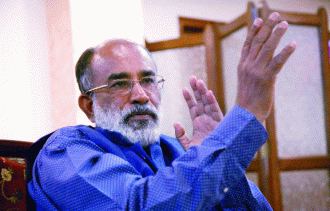
Credit for Revenue Generation and Job Creation Goes to Tourism
by Ankita Saxena / 12 July 2018Tourism Minister K.J. Alphons tells this writer how along with sizeable revenue generation, tourism continues to generate jobs in India.
The Union Minister of State for Tourism, Alphons Kannanthanam, believes that with his ministry’s aggressive marketing campaigns, the number of foreign tourist arrivals and revenue generated from the same can be doubled over the next three years. Calling Indian tourism transformational, he appeals to everyone to visit the country to experience the various colours of life. Here is an extract from the interview:
How has the tourism industry fared so far?
In 2017, we received a total of 16.5 million tourists. Keeping the non-resident Indians aside, the number of foreign tourist arrivals (FTAs) was 10.1 million, registering a growth of 15.67 per cent over 2016. Thus we crossed the 10 million mark of FTAs. The forex earnings from foreign tourists in 2017 amounted to $27 billion or Rs 180,000 crore, registering a growth of 20.8 per cent over the previous year. Domestic tourism has also done well, registering a growth of about 15 per cent in 2017 over 2016. The tourism sector contributed seven per cent to India’s GDP and 14 per cent to the job market. Of all employed persons in India, 14 per cent are employed under the tourism sector which amounts to nearly 82 million. Over the last four years, the sector has created 14.92 million additional jobs. However, I am not happy with these figures. My target is to double the inflow of FTAs and revenue from tourism over the next three years.
What is the Ministry’s promotional plan?
Prime Minister Narendra Modi has been our biggest ambassador in promoting tourism and uplifting India’s reputation in the world. We are positioning ourselves in the international market in a different light and flooding the market with innovative ideas regarding India through mainstream and social media. We are conducting roadshows in various markets like the US, Russia, China and Australia. China is the biggest outbound market with 144 million travellers every year. If India can get even 10 percent of these tourists, it would be phenomenal. Thus we are planning to do major promotions in China.
Six 60-second promotional videos have been made in many languages to promote various themes of Indian tourism. Of these, four have been released in the overseas markets on yoga, wildlife, ayurveda and luxury. These videos have been massive hits with over 25 million views within 24 hours of their launch. The Indian embassies and high commissions abroad are also being involved in overseas marketing of tourism.
What is the update on the revamped Incredible India campaign?
The Incredible India 2.0 campaign has been launched on a pilot basis in various markets and proved to be a success. The new website has innovative content and is more interactive and comprehensive. It will prove to be a valuable guide to all tourists. We are partnering with Google for virtual reality elements for the website. Soon, we are also going to launch our mobile App.
What has been the Ministry’s budget?
The Ministry has received funds to the tune of Rs 600 crore out of which Rs 453 crore have been set aside for overseas promotions and the rest are for marketing in India. With a focus on 15 themes of tourism, the Ministry has undertaken 67 projects with an outlay of Rs 6,537 crore under the Swadesh Darshan scheme. It has taken up 23 projects worth Rs 600 crore under the PRASAD scheme. The funds are being used to develop infrastructure at heritage sites and religious places besides developing eco-tourism and tribal tourism circuits. Nearly 30 of these projects are expected to be completed by the end of December and the rest shall be completed by March 2019.
Which other projects are in the pipeline?
The Ministry has identified 12 iconic sites based on the largest tourist footfall. State-of-the-art infrastructure will be developed at these sites. Currently, after consultation with the stakeholders at each of these sites, a consultant will be appointed and then these will be converted to projects and taken forward.
The “Adopt a Heritage” scheme is also a way to bring Indians closer to their heritage where they can adopt a monument and take up its upkeep and further development. Expression of Interest has been submitted by various NGOs, private players and individuals and the projects have taken off after a go-ahead from the Archaeological Survey of India (ASI). The Northeast is an untapped region. Our aim is to take up at least two projects in each of the states in the region.
We are promoting the Buddhist Circuit in a big way. As part of this initiative, we will be hosting a Buddhist conclave in New Delhi from August 26 to 28. We will develop Sarnath as a hub for this circuit but to develop the complete circuit, we are in talks with the World Bank to finance the project, subject to the approval of the Finance Ministry. The Ministry is also investing funds in the Udan scheme to accelerate air connectivity to key destinations like Khajuraho, Aurangabad and Hampi. We are willing to fund the losses incurred if these routes do not show profit. We have also allocated Rs 100 crore to develop infrastructure for cruise tourism at Mumbai, Margao, Kochi and Chennai. Last year 139 ships called at Indian ports and 1,74,000 Indians went on cruise holidays. However, globally there are 26 million cruisers and this segment offers very high revenues. Our aim is to get more ships to home-berth at Indian ports.
What are the Ministry’s plans to make night tourism a reality in India?
Globally when tourism receipts are considered, the largest revenues are contributed by night tourism. Though the tourists visit the monuments in the day, the entrance fee from them is nominal. It is entertainment that generates big money. We need to create a safe and open environment where we can entertain the guests at night. These can include light and sound shows at monuments, cafes, pubs and restaurants that should be open throughout the night.
Writer: Ankita Saxena
Courtesy: The Pioneer

Vacation with Your Pet
by Opinion Express / 11 June 2018Although with a increasing number of pet-friendly resorts, hotels, restaurants, pool parties, customized getaways, and modes of travel, the options for pet parents are developing but some difficulties are still there.
Trek your dog to the hills or riverside at Rishikesh or Mussoorie. Or just have a fun-filled Sunday brunch with a pool party at a retreat. Vacations are finally becoming more pet-friendly but hiccups abound — like spending a bomb and still not being able to travel with your pet!
Nevertheless, pet-friendly hotels, cafes, and travel options facilities are gradually shaping up getaways.
Meet 33-year-old Divya Dugar, a Delhi-based freelance journalist and a mother of two dogs Tigress and Marcopolo. She, her husband and pets went on their first trip to Goa by train on a 32-hour journey.
“After the death of my dog Pondi two years ago, we decided to travel with Marcopolo and Tigress and spread awareness about adopting dogs from the streets. When I started planning a six-week vacation in Goa and the Western Ghats with my pets, there was hardly any information on the Internet. Renting a car was expensive. But the Indian Railways came to our rescue. Since then we have done 25 trips by rail to Goa and Western Ghats, Jaipur, Dehra Dun, Mussoorie, Lansdowne, Nag Tibba, Alipura and Orchha in Madhya Pradesh, Churu in Rajasthan besides others,” Dugar says.
She did a lot of research and came to know that many Army and police officials travel with their dogs on train. As per Railway policy, pets can be carried only in AC1 coupe booked by the pet parents. Or, they can be booked in the luggage car. Owners have to make their own arrangements for water and food during the journey. The cost of pet travel depends on the type of train and the size and age of the dog.
Dogs, when carried in the break-van (Dog-Box) and/or AC1 are charged at Scale ‘L’ (luggage rates) on the basis of weight, subject to a minimum charge of Rs 10 per dog. There is an option for the passengers to carry the dog in the Dog-Box which is 30 kg and is charged on the prepaid basis.
“We went to the Nizamuddin Railway Station from where the Delhi-Madgaon Rajdhani departs. We booked an AC1 coupe. We met the chief commissioner at Baroda House and asked for a two-berth coupe so that there would be no co-passengers objecting to the presence of our dogs,” Dugar recalls.
Dogs don’t need a ticket. They just need to be booked at the parcel office at the railway station which takes Rs 800 per dog, depending on the distance. “When I travelled to Rajasthan, I had to pay only Rs 200 for my dogs. You need to go with a copy of your ticket and ID and tell the parcel office that you want to book a dog. It turns out much cheaper than road or air,” she adds.
Getting on the train was a big victory but it came with new challenges. “We prepared all the necessary meals, medicines and also made a list of stops for toilet breaks. We didn’t know how they will pee and poop and walked them outside the train whenever there was a halt which was risky. But now we have got a hang of it and most of our trips happen by train and then we hire a taxi or an auto. When we were at Orchha, we were allowed with the dogs at the ASI site which was a big surprise. Marcopolo and Tigress visited Jahangirmahal, Rajamahal and even went to the Laxmi temple which we thought the priest might not allow,” Dugar says.
Some other pet-friendly resorts Dugar has been to includes Bundelkhand Riverside Resort in Orchha, Alipura Palace in Madhya Pradesh, The Goat’s Village at Nag Tibba, The White Peak Homestay in Kumaon, The Tree Of Life Resort in Jaipur and other branches, Narayan Niwas Castle at Mahansar in Rajasthan, The Dune Eco Village & Spa resort in Pondicherry and some Air BnB homestays that make long term stay feasible.
“Before you make a booking at a hotel, one must call them and inform that you have a pet who will be travelling with you and there will be special needs. We have a lot of discussion with the staff about food preferences for the dogs. I have only been charged for the dog food but never for the stay,” Dugar says, adding that if someone wants a luxurious stay, Taj Vivanta is a good option as they are pet friendly but charge for the pets too.
Dugar is now planning to write a guidebook for pet parents on travelling with their pet. She will be heading to Kumaon, Madhya Pradesh for her next vocation & also plan to go on a backpacking trip to South East Asia with the pets by road from Manipur to Thailand.
Dugar’s dog adjusted to the train movement in just 30-45 minutes. They enjoyed Rajdhani hospitality and savoured the soup sticks, plain rice and vanilla ice cream,” Dugar recalls.
Pet behaviourist Swati Tandon, a pet parent of a Shih Tzu and two Lhasa Apsos named Giggle, Tickle and Feather, feels it is important to assess if the dog is travel ready.
“There are dogs who are fearful of car rides because they relate it to visiting their vet. So at least once a month, one must take his pet on car rides to other places and eat out at pet-friendly cafes. Dogs may feel sick in a moving car. Give your pet a prescribed medicine half-an-hour before the ride starts,” Tandon suggests.
There are many dos and don’ts to follow when it comes to travelling with your pet. Feed your pet an hour before the journey and keep the portion size small. Before boarding, take him or her for a walk so that your pet is tired and can sleep in the car. Too much energy results in restlessness. Make a travel bag of the first aid kit, water, treats, bowl, wet and dry tissues, potty scooper, lint roller and a seat protector. Drive slow, especially over speed breakers. If travelling long distance, give your dog a toilet break every half hour,” Tandon advises.
Two years ago, Akshay Gupta, founder and managing director of Pet Fed, came up with the idea of a weekend getaway with group pets and parents to Rishikesh and Mussoorie. In collaboration with Make My Trip, Gupta organised a Bring Your Own Dog trip for 12 dogs and 25 people in a customised bus at a pet-friendly resort.
“We curated this unique trip in 2016 as a three-day getaway. Since there is no provision to carry pets in a bus, we booked two luxury buses and customised them by putting comfortable beds for the pets and seat belt so that they didn’t feel the jerks. A behaviourist was there to take care of the dogs,” Gupta says. The trip costed around Rs 15000 per person.
Travelling with your pet is still a dodgy issue. State Roadways buses and Volvos have no provision for pets on-board. They have strict rules against carrying pets. The few who do agree informally to take the pet, charge a bomb. Sanjay Kumar, a bus driver with Haryana Roadways, says: “We are not allowed to take the pets in AC or non-AC buses but a few who agree to this request demand double ticket money and allow to keep the pet near the footrest area and not on the seat.”
Air travel is not just super expensive but unpleasant for the pet as they are put in the cargo area. Only Air India allows pets in the cabin, but only up to a limit and with a final approval from the pilot. Some airlines allow pets that are eight weeks old, whereas, for others, the minimum age limit is 12 weeks.
Kartika Tomar, Airhostess at Air India Express, says: “We have had passengers who have travelled with their pet in the cabin. But these pets need valid health and rabies vaccination certificates. Air India carries pets at an additional charge and not in the free baggage allowance, even if the passenger has no other baggage. A maximum of two pets or service dogs are permitted per aircraft, with the concurrence of the commander.”
If you want to go on a backpacking trip, consult Collar Folk, a Gurugram-based travel agency that provides accommodation and transportation services for pet owners. Rukmini Vaish, founder of Collar Folk, says: “I’ve grown up with pets and I felt sad about leaving them behind when on holidays. It used to be difficult to take them along and we often requested friends to take care of them. So, I came up with this travel site that can help pet owners decide where to go on a pet friendly vacation,” Vaish tells you.
The packages starts from Rs 1500 per night to Rs 25,000 per night, depending on the luxuries and services required. The site also offers a loyalty discount programme. Activities include an hour-long nature walk, treks and water sports.
Viren Sharma, founder of Mad Over Dogs, a pet-friendly resort provides lodging facilities for dogs with interesting activities. We provide special sugar-free ice-creams, sugar-free yogurt and special juices for dogs,” Viren, himself a parent to 17 dogs of which two are Indie dogs (Roody Sharma and Buddhu Sharma), and 22 cats.
He charges Rs 600 per day which includes diet, care, accommodation and free access to the pool. The USP of this dog hostel is that it is open to all kinds of pets be it cats, birds or dogs.
Up-and-coming Rakkh Resort at Palampur, Himachal Pradesh has a strict policy for pet owners. Before bringing pets to the property, the pet parent has to register their pets and sign this written Pet Policy upon arrival. It charges Rs 1,000 per night for the pet stay and not more than two pets are allowed per room. The owners are required to bring the feeding bowls, a proof of vaccinations and dog food.
Meanwhile, Crazy K9 Campers in Mumbai provides trekking, boating, treasure hunts, river swimming, kayaking, facilities for pet parents and their pets. Dog trainer Pooja Sathe who founded Crazy K9 Campers, says: “We’ve a set venue for each camp that opens over the weekend. We do a camp in every two months. There is one Monsoon Special Camp on July 14 and 15. These camps host 15 to 20 dogs and 40 to 50 people at a time. The package ranges from Rs 3500 to Rs 5000 a person, including accommodation, meals and activities.
But not all dog owners travel. Such kinds make good of the holidays by going to Pupper Parties with their dogs that takes place every Sunday. Once every month, Pet Fed organises a BYOD Pool Party on a Sunday in Delhi, Mumbai and Bengaluru.
“The BYOD Pool Party was introduced on the requests of the pet owners wanting to spend quality time with their dogs with picnics, playing games, pool splashes and more. It is a four-hour event which ends with a lavish brunch for the pet parent and their pet,” says Gupta who is also coming up with PetFed 2018 in Delhi on December 15, 2018 at NSIC Grounds, Okhla.
Tandon with Giggle, Tickle and Feather go for a swim at Jeffurry’s, or picnic and eat out at Puppichino Café or Off The Leash dog park and café in Gurugram,
Eshita, founder of Off The Leash, has converted her farm house into a dog park and café which gives preference to dogs and only then the humans. “The inspiration came from my dog Zara, a German Shepherd. The farmhouse has ample space for dogs to play. There are pool parties arranged over the weekends where the dogs and owners can enjoy a swim together. The entry fee is Rs 400 per dog and no fees charged for owners. Even at the time of ordering food, owners have to fill in their dog’s name in the register and then order food for themselves,” Eshita tells you.
Nayani Tandon, owner of Delhi’s first dog café Puppychino, says that they added a special ‘woozy boozy’ beer for dogs last year which is non-alcoholic. “It’s made of chicken broth and is healthy for dogs. If the owner is enjoying beer, why not give the pet a sip too? We have a special menu for dogs which include cup cakes, pizza, pasta, pan cakes and freshly baked dog biscuits. We have opened grooming centres so that parents can have food while the dogs can have a relaxing session,” Nayani says.
Another popular pet eatout Cafe Fur Ball Story in Gurugram has a curated dog food menu, both vegetarian and non- vegetarian. Animesh Katiyar and Srishti Sharma studied at a college which had got two labradors for student’s recreation. “Students started attending college only because of these dogs. Those who felt homesick, they started getting a feeling of belonging. We thought if pet therapy is working so well in such a small place, we should try to make it work elsewhere too,” says Sharma, a pet parent of a two-year-old pug Candy.
They started with dog therapy in December 2015 and have therapy trained dogs who visit residences, company, NGOs and hospitals for stress reduction. “We have therapy trained dogs at the cafe too, to meet and beat the stress of our guests at the cafe. There is a special staffer allotted to dogs who are ferocious or do not like to mix up with anyone,” Sharma adds.
The price for boarding facilities for smaller breeds is Rs 749 for a day and bigger breeds, Rs 899. They also provide day care facility for which the charges are Rs 500. The pool charge is Rs 300 per dog for half-an-hour, the pet parent can also accompany their pet to the pool, there are no separate charges for that.
The concept of boarding is very up and coming now, what with nuclear families adopting this concept for convenience. GoDogee boarding in Noida not only provides day care and boarding options but also gives grooming and treatment facilities. It can cost somewhere between Rs 400 to Rs 800 a day, depending on the duration and size of your pet.
However, if you are uncomfortable leaving your pet in a boarding facility or you’re travelling for a longer duration, homestays are a more suitable option. One such place is Jeffurry’s Pet Resort in Mundka, Delhi. The resort owner Achal Gupta is a pet lover who has a two-and-a-half-year-old Rottweiler Jeff and a three-month-old golden retriever Maaza.
“I was travelling with Jeff in June 2016 and couldn’t find a decent dog boarding or homestay option to leave him. That is when the idea of a pet resort with a 40 room luxury air-conditioned hotel came up. It has a swimming pool, café, dog park, spa and grooming centres. The facility is spread over 40,000 sq feet area and offers boarding facility for the dogs starts from Rs 999 and go up to Rs 1899 for 24 hours. We have already boarded 25 dogs and around 30 dogs have come here for swim sessions and play sessions,” Achal adds.
Cuddle Inn pet boarding in Mehrauli is a homestay providing a homely air-conditioned environment. The owners themselves look after the pets. To make sure they are taking proper care of all pets, they don’t take more than four pets at once, making sure the pet isn’t neglected during absence. They also have a tie-up with a vet.
Homely Dog Boarding in Indirapuram is a place where Anushka, an animal lover, sits pets in her home, be it a turtle or a dog. “We provide freshly cooked food and take the pet for a walk at the nearby park. You can video call anytime while you are away and see your pet. We also have an emergency vet,” says Anushka who charges a minimalistic Rs 500 to Rs 1000 per day, depending on the size of the pet.
Sangeeta Yadav, Musba Hashmi,Monika Thakur and Gurbani Singh contributed to the story
Writer: Sunday Pioneer
Courtesy: The Pioneer
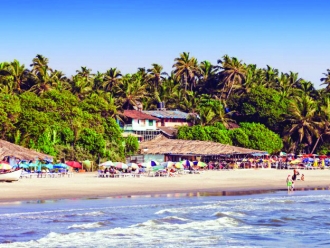
Goa Now a Popular Tourist Destination in Monsoon Too
by Opinion Express / 08 June 2018Goa, which was earlier known as the country’s popular party destination, has now beaten Kerala and considered as a top monsoon destination and a popular summer hot-spot till now for vacationers. By Team Viva
Monsoon is magical in Goa — or so feels the Indian traveller. The small yet scenic state of Goa is the uncontested winner in the top growth destinations category for the rainy season. Places in Goa like Colva, Arpora, Dona Paula and Cansaulim saw a staggering 156 per cent, 153 per cent, 105 per cent and 57 per cent increase in searches (respectively) vis-à-vis 2017. Goa, best known for its beautiful beaches and laid-back vibe, is a huge hit especially amongst the younger Indian traveller segment. Calangute and Candolim have also emerged as the top searched domestic destinations for the wet season in Goa, according to Hotels.com which has unveiled a list of 2018’s favorite monsoon destinations for Indian travellers.
To put the data together, the hotel searches made by Indian travellers for the period of July 2018 to August 2018 were analysed and the list of India’s monsoon travel hotlist has been developed on this.
The top 10 Indian destinations are Calangute (Goa), Mumbai, New Delhi, Candolim (Goa), Udaipur, Thiruvananthapuram, Munnar, Jaipur, Srinagar and Leh.
While Goa topped the domestic destinations, among the international hotspots were Bali, that was the leader, followed by London, Paris, Singapore, Pattaya, New York, Dubai, Bangkok, Santorini and Amsterdam. The fastest growing destinations were Phuket, which had an 89 per cent growth, Edinburgh with 72 percent, Moscow with 52 per cent, Florence and Mykonos with 6 per cent.
Not surprisingly, the top international destinations feature the immensely popular London-Paris-New York trinity. These regularly frequented, high fashion destinations continue to catch the fancy of Indians. This interest can additionally be attributed to the vast number of Bollywood movies being shot there. While Queen brought Paris to the limelight, English Vinglish showcased the life of the beautiful neighbourhoods of New York.
The fact that there are five short-haul Asia Pacific destinations on the top 10 list only corroborates the growing trend of travellers preferring to take short but multiple holidays in a year.
The top growing destinations bring to light some refreshingly new locations like Florence, Mykonos and Legian — showing that Indians are steadily moving away from the tried-and-tested holidays and want to explore fresh destinations offering new, unique experiences.
It is interesting to note that metropolitan cities of Mumbai and Delhi have surpassed several traditionally popular domestic tourist destinations to clock into the top three on the list. This corroborates the growing trend of staycations.
Themed around the concept of “staying in,” staycations are especially gaining popularity amongst millennials who often find it difficult to travel long distances due to hectic lifestyles and busy work schedules.
The states of Rajasthan, Kerala and Jammu & Kashmir are also popular for monsoon travel, with each having two cities feature on the top domestic destinations list.
Writer: Team Viva
Courtesy: The Pioneer
FREE Download
OPINION EXPRESS MAGAZINE
Offer of the Month





